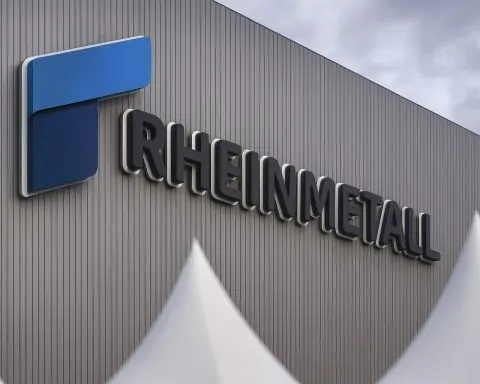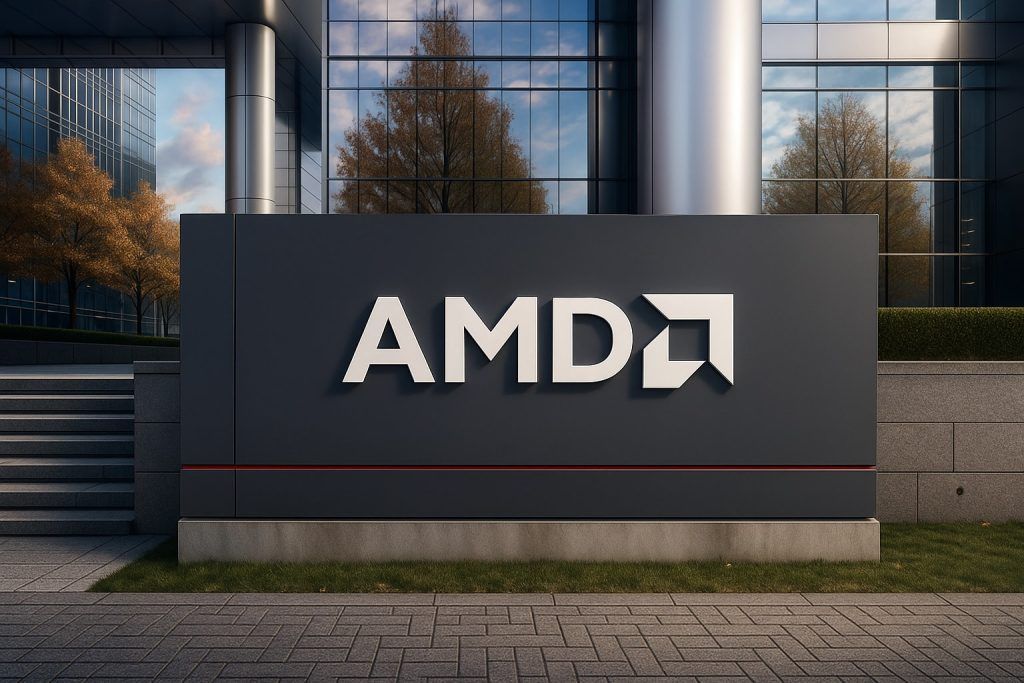Kazia Therapeutics Limited (NASDAQ: KZIA) is back on traders’ radars today after unveiling a rare immune‑complete response in a patient with metastatic triple‑negative breast cancer (TNBC) – even as the micro‑cap oncology company discloses a fresh Nasdaq delisting warning and files a new prospectus supplement with the U.S. SEC. [1]
Key Takeaways for 19 November 2025
- Clinical headline: A stage IV TNBC patient on a paxalisib + Keytruda + chemotherapy regimen has achieved an initial immune‑complete response (iCR) under iRECIST criteria in an FDA‑authorized single‑patient expanded‑access protocol. [2]
- Rarity: Complete responses in metastatic TNBC are described as “exceedingly uncommon”; approved regimens typically show complete response rates around 0.6–4% in trials. [3]
- Q4 update: Kazia’s business update highlights upcoming breast‑cancer conference data, a PD‑L1 degrader program (NDL2) moving toward IND‑enabling studies in early 2026, and a regulatory strategy for glioblastoma (GBM) via an FDA Type C meeting and Project FrontRunner. [4]
- Stock reaction: KZIA shares jumped more than 50% after hours on Tuesday to about $8.74, and traded over 50–70% higher in Wednesday pre‑market action before pulling back. [5]
- Delisting risk: The same update confirms a Nasdaq staff determination letter dated 12 November 2025, after Kazia failed to regain compliance with the $35 million Market Value of Listed Securities (MVLS) requirement by a 10 November deadline. The company plans to request a hearing to stay suspension or delisting. [6]
- Financing flexibility: A new prospectus supplement (Form 424B3) dated 18 November 2025 refreshes a previously registered ADS offering and incorporates the latest Form 6‑K disclosure; the filing notes a last reported Nasdaq price of $6.08 per ADS on 17 November 2025. [7]
Rare Immune‑Complete Response in Metastatic Triple‑Negative Breast Cancer
The core of today’s excitement is an update on a single, heavily pre‑treated patient with stage IV triple‑negative breast cancer, one of the most aggressive and difficult‑to‑treat breast‑cancer subtypes.
- The patient, a woman in her 40s, was initially diagnosed with TNBC in April 2023, underwent a double mastectomy, and later developed metastases to the bones and lungs. [8]
- Under an FDA‑authorized expanded‑access protocol, she received paxalisib (Kazia’s PI3K/mTOR inhibitor) plus pembrolizumab (Keytruda®) and standard chemotherapy. [9]
Kazia had previously reported an 86% reduction in overall tumor burden after just three weeks of combination therapy in this same patient. [10]
In the new update, a PET/CT scan performed after roughly three months of therapy showed complete metabolic resolution of all previously detected lesions, meeting the bar for an initial immune‑complete response (iCR) under iRECIST – the framework used to assess responses to immunotherapies. [11]
A follow‑up scan is planned to confirm the response; until then, the company emphasizes the “initial” nature of the iCR and the fact that this is still a single-patient, non‑randomized, expanded‑access case, not a controlled clinical trial result. [12]
Why This Matters in TNBC
Metastatic TNBC is notoriously hard to treat:
- Single‑agent pembrolizumab has typically achieved complete response rates of only 0.6–4% in key KEYNOTE studies.
- Even high‑profile antibody–drug conjugates such as sacituzumab govitecan have reported complete response rates of only around 2–4% in large phase 2 and 3 trials. [13]
Against that backdrop, any radiologic picture consistent with a complete response in stage IV TNBC is viewed as highly unusual. Kazia’s CEO Dr. John Friend described the finding as extremely encouraging and supportive of the mechanistic idea that paxalisib can boost anti‑tumor immune responses when combined with checkpoint blockade. [14]
Still, from a clinical‑evidence perspective, investors should treat this as proof‑of‑concept signal rather than definitive efficacy. Larger datasets from the formal Phase 1b study in advanced breast cancer will be needed to understand how reproducible this kind of response is.
Q4 Business Update: Pipeline Momentum Beyond a Single Patient
Alongside the iCR announcement, Kazia bundled a Q4 business update that touches three main areas: breast cancer, immuno‑oncology platform work, and glioblastoma (GBM) regulatory strategy. [15]
1. Upcoming Breast‑Cancer Data at Major Conferences
Kazia highlighted several 2025 conference presentations:
- Brisbane Cancer Conference (27–28 November 2025) – talks from QIMR Berghofer researchers on epigenetic approaches to overcoming metastasis and immunotherapy resistance in TNBC. [16]
- San Antonio Breast Cancer Symposium (SABCS), 10–14 December 2025 – two presentations, including:
- liquid‑biopsy work tracking PI3K‑mTOR residual disease signatures in metastatic breast cancer, and
- early clinical data from the Phase 1b trial combining paxalisib with olaparib or pembrolizumab/chemotherapy in advanced breast cancer. [17]
These meetings should offer more structured, peer‑review‑oriented views of Kazia’s breast‑cancer work beyond today’s single‑patient story.
2. NDL2 PD‑L1 Degrader: Next‑Generation Immuno‑Oncology
Kazia’s NDL2 program, licensed from QIMR Berghofer, targets PD‑L1 protein degradation rather than simple receptor blockade. The company describes this as an attempt to remove resistant, post‑translationally modified PD‑L1 species that may blunt the efficacy of current checkpoint inhibitors. [18]
The Q4 update reiterates that Kazia expects to start IND‑enabling preclinical studies for NDL2 in early 2026, positioning it as a follow‑on immuno‑oncology asset that could synergize with paxalisib and other agents. [19]
3. Glioblastoma (GBM) and FDA Project FrontRunner
Paxalisib originated as a brain‑penetrant PI3K/mTOR inhibitor for glioblastoma. In an October 2025 communication, Kazia reported overall‑survival data suggesting a median OS of about 15.5 months vs. 11.9 months in a specific unmethylated GBM subgroup when compared with standard of care in a prespecified analysis. [20]
Today’s update confirms that Kazia intends to request a Type C meeting with the FDA to:
- present paxalisib survival and safety data in newly diagnosed GBM,
- explore a potential NDA pathway aligned with the FDA Oncology Center of Excellence’s Project FrontRunner, which encourages the use of earlier‑line randomized data for approvals, and
- discuss requirements for a post‑approval confirmatory Phase 3 study. [21]
If the FDA is receptive, this could define a clearer regulatory roadmap for paxalisib beyond its role in breast‑cancer combinations.
Wild Price Action: From Penny‑Stock Lows to Double‑Digit Intraday Moves
News of the TNBC iCR and Q4 update triggered dramatic moves in KZIA stock:
- In after‑hours trading on Tuesday, shares spiked about 51–52% to roughly $8.74, a five‑month high, according to Australian coverage and U.S. market reports. [22]
- On Wednesday pre‑market, KZIA was among the top healthcare movers, up around 51–70% versus the prior close, with quotes in the $8.70 region. [23]
By early afternoon (around 12:47 UTC), however, the stock had cooled significantly, trading near $5.76 per share – a level that still reflects the company’s tiny sub‑$15 million market capitalization, depending on the share count used. [24]
For context, Kazia generated about A$1.9 million in revenue and a A$20.7 million net loss in 2025, underscoring its status as a high‑risk, development‑stage biotech. [25]
Nasdaq Delisting Risk: MVLS Non‑Compliance and Next Steps
Behind the clinical excitement lies a more sobering regulatory disclosure.
Kazia’s press materials and SEC filings confirm that:
- On 12 May 2025, Nasdaq notified the company that its Market Value of Listed Securities (MVLS) had fallen below the US$35 million minimum required for continued listing on the Nasdaq Capital Market (Rule 5550(b)(2)), over a period from 28 March to 9 May 2025. [26]
- Nasdaq granted 180 calendar days (until 10 November 2025) for the company to regain compliance. [27]
- Having failed to meet that threshold by the deadline, Kazia received a staff determination letter on 12 November 2025 stating that its ADSs are now subject to suspension/delisting, unless it timely requests a hearing before a Nasdaq Hearings Panel. [28]
Kazia says it intends to request that hearing, which will automatically stay any suspension or delisting while the case is reviewed. Management indicates it is evaluating “corporate and market‑based options,” such as alternative Nasdaq equity standards, to regain compliance – but there is no guarantee the panel will accept its plan. [29]
Multiple outlets today are flagging this delisting risk side‑by‑side with the bullish clinical headlines, reminding investors that micro‑cap biotech turnarounds often share the stage with listing and financing challenges. [30]
Fresh Prospectus Supplement: Keeping the Capital Markets Door Open
Adding another layer to today’s story, Kazia has filed a new prospectus supplement (Form 424B3) dated 18 November 2025.
The document:
- updates a previously filed December 2024 prospectus that is part of a broader Form F‑1 registration statement,
- incorporates information from a Form 6‑K furnished on 18 November 2025, which includes the latest corporate and Nasdaq‑compliance disclosures, and
- notes that Kazia’s ADSs trade on Nasdaq under the symbol KZIA, with a last reported sale price of $6.08 per ADS on 17 November 2025. [31]
While the supplement itself doesn’t necessarily mean an immediate new capital raise, it maintains flexibility for the company and existing holders to issue or resell ADSs under the shelf. For a cash‑burning oncology developer facing listing pressure, having an updated, effective prospectus is strategically important—even if potential dilution remains a key investor concern.
What Today’s News Means for Kazia Therapeutics
From an investor‑lens, 19 November 2025 brings a mixed but high‑impact set of signals:
Bullish Elements
- Biologically impressive signal: An iCR in metastatic TNBC, layered on top of prior 86% tumor‑shrinkage data in the same patient, strongly reinforces the idea that paxalisib + checkpoint blockade might be a potent combination in at least a subset of patients. [32]
- Pipeline depth: Beyond this case, the pipeline now spans GBM, advanced breast cancer, immuno‑oncology (NDL2 PD‑L1 degrader) and collaborative pediatric brain‑cancer research, giving Kazia multiple shots on goal. [33]
- Near‑term catalysts: Data at the Brisbane Cancer Conference and SABCS over the next month could provide more robust, peer‑reviewed support for the company’s scientific story. [34]
Bearish / Risk Factors
- Single‑patient evidence: Today’s headline case, while remarkable, represents n=1 in an expanded‑access setting; it cannot, on its own, justify broad claims about efficacy or commercial potential.
- Nasdaq uncertainty: The MVLS non‑compliance and pending hearing introduce a binary listing risk; a delisting could further reduce liquidity and institutional interest. [35]
- Ongoing cash burn: With ~A$1.9m in revenue and >A$20m in annual losses, Kazia remains heavily reliant on external financing, which may become more dilutive if the share price weakens. [36]
For now, KZIA looks like a classic high‑risk, high‑volatility biotech story where clinical optics and capital‑markets realities are pulling in opposite directions.
Important: This article is for informational purposes only and does not constitute investment advice. Biotech equities, especially micro‑caps like Kazia Therapeutics, can be extremely volatile and speculative. Always do your own research and consider speaking with a licensed financial adviser before making investment decisions.
Quick Q&A: KZIA on 19 November 2025
What triggered today’s KZIA stock surge?
Primarily, the news that a stage IV TNBC patient achieved an initial immune‑complete response on a paxalisib + Keytruda + chemotherapy regimen, combined with Kazia’s broader Q4 pipeline update. Traders reacted aggressively to the rarity of a complete response in this cancer setting. [37]
How rare is a complete response in metastatic triple‑negative breast cancer?
Very rare. Kazia cites historic complete response rates of roughly 0.6–4% for pembrolizumab monotherapy and similar low single‑digit rates for leading antibody–drug conjugates in metastatic TNBC trials—making any apparent complete response noteworthy, especially in a late‑line patient. [38]
Why is Kazia facing a possible Nasdaq delisting?
Kazia’s Market Value of Listed Securities remained below Nasdaq’s US$35 million minimum for an extended period earlier this year. After a 180‑day grace period ended on 10 November 2025 without regaining compliance, Nasdaq issued a staff determination letter. Kazia intends to request a hearing to argue for continued listing and present a compliance plan. [39]
What milestones should investors watch next?
- Confirmatory imaging for the TNBC iCR patient and any additional responses from the Phase 1b breast‑cancer trial
- Data presentations at the Brisbane Cancer Conference and SABCS in late 2025
- Updates on the FDA Type C meeting and potential regulatory path for paxalisib in GBM
- Outcomes of the Nasdaq Hearings Panel process and any related corporate actions (e.g., financing, strategic transactions, or structural changes). [40]
References
1. www.nasdaq.com, 2. www.nasdaq.com, 3. www.nasdaq.com, 4. www.biospace.com, 5. theqldr.com.au, 6. www.taiwannews.com.tw, 7. cdn.kscope.io, 8. theqldr.com.au, 9. www.nasdaq.com, 10. www.stocktitan.net, 11. www.nasdaq.com, 12. www.nasdaq.com, 13. www.nasdaq.com, 14. www.nasdaq.com, 15. www.biospace.com, 16. www.biospace.com, 17. www.biospace.com, 18. www.biospace.com, 19. www.biospace.com, 20. www.stocktitan.net, 21. www.biospace.com, 22. theqldr.com.au, 23. www.benzinga.com, 24. www.stocktitan.net, 25. stockanalysis.com, 26. www.taiwannews.com.tw, 27. www.taiwannews.com.tw, 28. www.taiwannews.com.tw, 29. www.taiwannews.com.tw, 30. www.investing.com, 31. cdn.kscope.io, 32. www.nasdaq.com, 33. www.stocktitan.net, 34. www.biospace.com, 35. www.taiwannews.com.tw, 36. stockanalysis.com, 37. www.nasdaq.com, 38. www.nasdaq.com, 39. www.taiwannews.com.tw, 40. www.biospace.com










